John Hurrell – 15 June, 2011
In a way I sympathise. A lot of art comes out of pigheaded obsessiveness. Such artists usually get fixated on certain materials first and later they worry about how to attract supportive conceptual credence from curators and critics by picking subject matter strategically.
This is a one of those craft shows which you might think is third wave conceptual art or a display about aspects of agrarian history, when basically the artist just enjoys showing off his manual skill - which is considerable, if not extraordinary. Optically these wooden sculptures are gorgeous. The gnarled gorse wood has a walnuty, deep toned, intricately veined quality that is highly attractive and unusual. Regan Gentry’s exquisite cutting, carving and inlaying brings this sensuality out.
There is plenty of humour as he presents a fastidiously patterned, decorative tree stump supporting a leaning gorse wood axe and gorse wood mutton chop (note the corny pun), and crates of gorse-carved bottled beer to give a rugged outdoorsy bloke (such as presumably himself) quality gorse-clearing strength. There’s gorse stag antlers on a wall, various gorse garden implements, gorse trestles and gorse carpentry tools too. As a material it is well and truly fetishised; he’s besotted. If given the chance you can imagine Gentry rebuilding the Te Tuhi gallery walls, floor and ceiling solely with this substance if he could. And putting on gorse boots, shorts and singlet to do it.
In a way I sympathise. A lot of art comes out of pigheaded obsessiveness. Such artists usually get fixated on certain materials first and later they worry about how to attract supportive conceptual credence from curators and critics by picking subject matter strategically; their art initially driven by play with materials and intuitive exploration, their compelling rationales then crafted basically to keep smart-arsed critics off their backs and win academic approval in the form of torrents of words or supportive grants.
I like the sexiness of these (at times) complicatedly made sculptures. It’s not their folksy cuteness or the energy behind them I love. It is their dessert-like, chocolatey / caramelled surfaces. Many look edible, like coffee blancmange - and my body succumbs by almost (but not quite) salivating over them.
Yet this artist has done better. I remember one of Gentry’s earlier projects when as a comparatively unknown (but recent) graduate he approached various art institutions to make a conceptual art work that consisted of - (pause) wait for it - a foot long ruler jamming open the art gallery door. Not particularly sensual but utterly brilliant in its symbolism, it lampooned the ambition of an emerging artist while also cheekily perpetuating his own careerism. If the municipal gallery agreed he would photograph the measuring device crammed across their entrance way, and exhibit such images with the accompanying correspondence. A simple but perfect idea.
Gentry’s current Te Tuhi show is more suited for a venue like Objectspace, though it is probably too big for that particular institution. Despite having an earnestly contextualising video nearby (and photographs in the show) dealing with the role of gorse in our rural social history, the exhibition has an attractively flakey incongruity (like cathedrals made of matchsticks or dogs made of woven cigarette packets) demonstrating a vaguely surrealist or art brut sensibility (though it is ultimately too logical for those) - being in essence ‘gee whiz’ art that fixates on craft expertise.
John Hurrell
Recent Comments
John Hurrell
Thanks for your comments Bevan and Mark. I think 'odd' is a good term because writing reviews is a form ...
Bevan Shaw
I also find the points made about craft odd. Especially since the very things about the surfaces that John responds ...
Mark Amery
I find this a decidedly odd review John. It makes much of 'craft art' and that 'this sort' of art ...
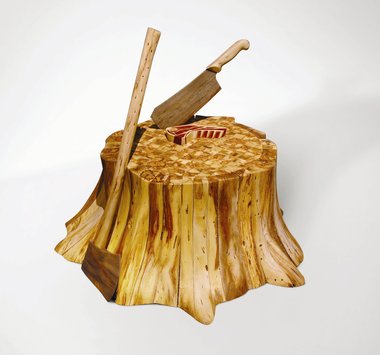
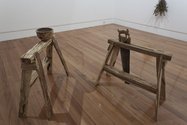
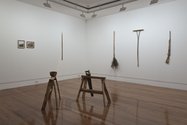
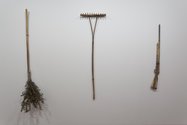
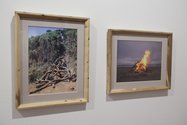

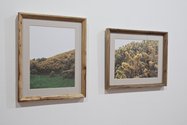
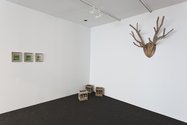

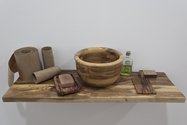
 Two Rooms presents a program of residencies and projects
Two Rooms presents a program of residencies and projects Advertising in this column
Advertising in this column



This Discussion has 3 comments.
Comment
Mark Amery, 9:56 p.m. 15 June, 2011 #
I find this a decidedly odd review John. It makes much of 'craft art' and that 'this sort' of art belongs at Objectspace, which is a very odd limiting of a public gallery's role but more particularly what Gentry is getting at.
First some missing context. This exhibition, or its first iteration, was first shown at the Dowse four years ago. I wrote about it at that time, and can only write with regards to that show.
Yet what was key to the exhibition wasn't just the craft and delightful ideas and tricks but that it was exploring in a very resourceful and clever way a huge important territory in NZ of the contradictory and complex use of a plant like gorse in our history and today (lately as a protector of native plantings). Its a very rich subject and Gentry, at least at the Dowse, explored it well.
The show was special for feeling as strongly conceptually based as craft based then. Something this review seems to completely not see (again I didn't see the show to understand why that could be the case - it could be the presentation's fault). Certainly there was no sense of the video there being 'earnestly contextualising'.
Indeed Of Gorse Of Course, as did the Foot in the Door project promised further clever gallery or museum work from the very talented Mr Gentry we're still waiting to see more of.
Bevan Shaw, 9:26 a.m. 17 June, 2011 #
I also find the points made about craft odd. Especially since the very things about the surfaces that John responds to could not have come about without craft.
John Hurrell, 10:24 a.m. 17 June, 2011 #
Thanks for your comments Bevan and Mark. I think 'odd' is a good term because writing reviews is a form of thinking out loud as a means of drawing up one's ambivalences, enthusiasms and aversions about a work. It is a means of discovery that avoids the formulaic. I see my position as occupying a middle ground, attacking both artmaking that worships its own technique, and art practices that are so rarefied that they spurn all physical pleasure for the viewer, though mental pleasure may in fact be the same thing (ie. embedded in the body). I don't think Gentry's use of history makes him a conceptualist - at least not in that work. It's really an excuse to work with gorse because he is hypnotised by the material - not a drivingily intellectual raison d'etre.
Participate
Register to Participate.
Sign in
Sign in to an existing account.